Share

Wind Power
News review: Chinese OEMs sweep installations | Oil majors cut renewables | Siemens Gamesa India sale | European auctions
Welcome to the Wind Power News Review – hosted by Windpower Monthly senior reporter, Robyn White, and Windpower Monthly reporter, Orlando Jenkinson – along with our regular panellists, Shashi Barla and Will Sheard.
This time on the news review, we’ll ask our panellists for their views on global installation figures from wind turbine manufacturers last year, which show Chinese companies including Goldwind, Envision, Mingyang and Windey coming out on top.
We also explore why some of the biggest European energy companies have cut their renewable energy targets recently to focus more on fossil fuel production.
Meanwhile, Siemens Gamesa has just sold 90% of its wind business in India and Sri Lanka. How does this reflect the company’s broader strategy?
Finally, we explore the vastly different outcomes of recent onshore wind tenders in Germany and Italy.
This episode was produced by Inga Marsden.
More episodes
View all episodes
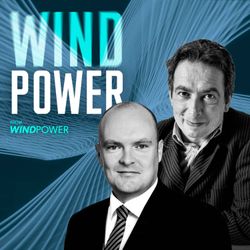
50. ‘Shocks are good for shaking Europe out of its complacency’
17:40||Season 1, Ep. 50As the wind industry braces for a period of uncertainty due to unfavourable policy conditions in the US and disruption to the supply chain, some argue that geopolitical shocks are not necessarily a bad thing for Europe.Recorded at the recent WindEurope conference in Copenhagen, senior Vestas spokesman Morten Dyrholm speaks to Ian Griggs, editor of Windpower Monthly, about his forecast for wind power in Europe, the say/do gap in policy-making across the bloc and why the industry needs to find its voice.This episode was produced by Inga Marsden.
49. News Review: Empire Wind | US tariffs | Hornsea 4 | OEM results
32:37||Season 1, Ep. 49Welcome to the Wind Power News Review – hosted by Windpower Monthly senior reporter, Robyn White, and Windpower Monthly reporter, Orlando Jenkinson – along with our regular panellists, Shashi Barla and Sorcha Versteeg.This time on the news review, we ask our panellists for their views on a tumultuous few weeks in the United States, which has seen the US government order a stop to work at Equinor’s Empire Wind offshore wind project in New York. The halt order has since been rescinded, but uncertainty continues to reign in the West’s biggest wind energy market. We also explore how President Donald Trump’s tariffs are impacting the global wind industry, from rival markets in Europe and China to the responses of the biggest wind energy firms. Meanwhile, Danish renewables major Ørsted has suspended the Hornsea 4 offshore wind farm in the UK North Sea. What does this mean for the company, and the industry, going forward? Finally, we examine the first quarter financial results of major western wind turbine manufacturers, which seem to be improving after years of difficulties. This episode was produced by Inga Marsden.Windpower Monthly is now on Bluesky – follow us at @windpowermonthly.bsky.social for all the latest updates.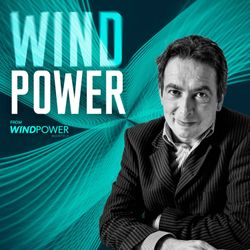
48. Uncertainty ‘more dangerous’ than Trump’s tariffs for wind industry
15:35||Season 1, Ep. 48The only thing worse, in policy terms, than Donald Trump’s sweeping tariffs on countries across the world, are the constant US policy flip-flops, senior wind industry figures have said.As Trump began to impose tariffs on US imports; many countries, including China, responded in force with their own tariffs, sparking fears of a global trade war. Although the US president has since relented on high tariffs for some countries, the world remains on high alert for yet another US policy reversal creating a climate of uncertainty which has knocked the confidence of the wind industry to invest. Ian Griggs, editor of Windpower Monthly, was at last month’s Wind Europe conference in Copenhagen as the tariffs began to bite and he took the opportunity to speak to delegates from DNV, Statkraft, Modvion and Hitachi about what they might mean for the wind industry. They said the constant policy reversals were potentially even more harmful than the tariffs themselves but that this was tempered by some silver linings too.This episode was produced by Inga Marsden.
46. Ørsted’s European development chief on the EU’s clean industrial deal
18:12||Season 1, Ep. 46As delegates prepare for the annual WindEurope conference in Copenhagen, Ørsted’s European development chief discusses the EU’s proposals for the Clean Industrial Deal and its implications for the wind industry.The EU’s Clean Industrial Deal contains a raft of measures which could benefit the wind industry.Together, they form a vision of increased electrification across Europe, with state-backed power purchase agreements and guidelines to address foreign subsidies and support the EU’s manufacturing base.Duncan Clark, head of European development at Ørsted - and an ambassador for the conference – spoke to Ian Griggs, editor of Windpower Monthly, about what these measures could mean for the wind industry, if adopted.This episode was produced by Inga Marsden.Windpower Monthly is now on Bluesky – follow us at @windpowermonthly.bsky.social for all the latest updates.
45. How robots are shaping the future of wind power
23:45||Season 1, Ep. 45Robotics is still a fringe technology in wind energy, but it has vast potential to transform the industry from the factory floor to operational turbine towers and blades. In manufacturing, machines offer the prospect of precision and efficiency in the exacting task of blade finishing. Meanwhile, the rapid evolution of drone technology is increasingly being applied to streamline operations and maintenance work at both onshore and offshore wind farms. In this episode of the Wind Power Podcast, we spoke with two leading experts on the use of robots in wind power to see what the future holds on this exciting new frontier for renewable energy. This episode was produced by Inga Marsden.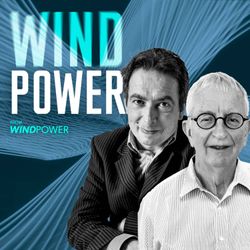
44. Turbines of the Year – Chinese OEMs pursue ‘scale or die’ principle
29:08||Season 1, Ep. 44The winners of this year’s Turbines of the Year awards reveal stark contrasts in the trajectory of technology development between European and Chinese OEMs – but what will happen next?Windpower Monthly’s technology and market trends correspondent – and Turbines of the Year judge – Eize de Vries answers questions about why the winners won and the shape of things to come in turbine technology, both on and offshore.The discussion also touches on why floating wind power has not reached commercial scale yet and whether this sector will ever come of age.Finally, for companies which are considering putting their technology forward for next year’s awards, Eize shares some invaluable advice about how to shape a submission.This episode was produced by Inga Marsden. Windpower Monthly is now on Bluesky – follow us at @windpowermonthly.bsky.social for all the latest updates.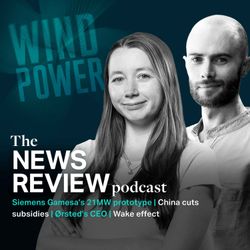
43. News review: Siemens Gamesa’s 21MW prototype | China cuts subsidies | Ørsted’s CEO | Wake effect
30:27||Season 1, Ep. 43Welcome to the Wind Power news review – hosted by Windpower Monthly senior reporter Robyn White and Windpower Monthly reporter Orlando Jenkinson – along with our panel of experts, independent analyst Shashi Barla and K2 Management's country director for the UK and Ireland Sorcha Versteeg.This time on the news review; we discuss Siemens Gamesa’s new 21MW prototype, and find out how much of an impact this massive new wind turbine model could have on the wider wind industry.We also explore the Chinese government’s decision to cut renewable energy subsidies and embrace a CfD-style pricing system, as it looks to maintain its place as the world’s primary wind energy market. Meanwhile, our panellists give their verdict on Ørsted’s appointment of a new CEO amid prolonged financial difficulties, and discuss how he might look to change the company’s strategy going forward.Finally, there is a closer look at how a dispute between offshore wind developers in the UK North Sea has raised questions about the wake effect and its impact on neighbouring wind farms. This episode was produced by Inga Marsden.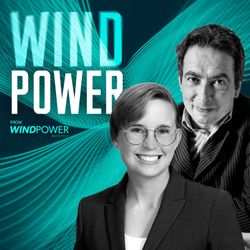
42. ‘We need a standardised dictionary for blade damage’
30:46||Season 1, Ep. 42What is the difference between a split and a crack on a turbine blade? Our guest explains the need for an industry standard for blade damage.Speaking ahead of Windpower Monthly’s Blades USA conference in late February, Lili Haus, wind energy engineer and scientist at the Electric Power Research Institute, discusses her quest to introduce a global dictionary of agreed terms to categorise blade damage. In Episode 32 of the Wind Power podcast, Haus, a speaker at the Blades USA conference, discusses the latest techniques available for blade inspections, the benefits of non-destructive evaluation and how predictive analysis could reduce the rate of costly blade failures. Listen to this podcast episode to get a special discount code for the Blades USA conference and find out more about the event on our dedicated website.This episode was produced by Inga Marsden and Til Owen.